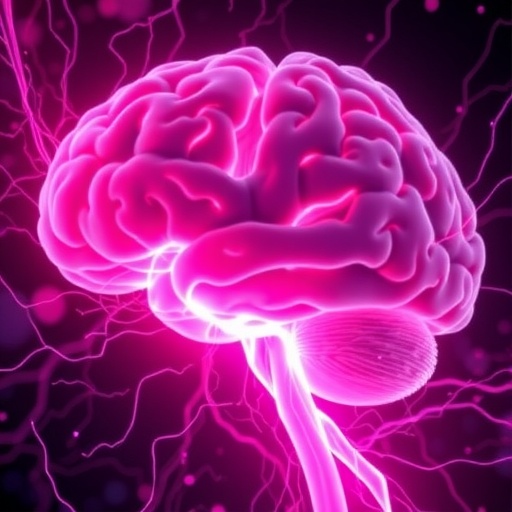Glioblastoma, the most aggressive and lethal form of brain cancer, has long been regarded as a localized cerebral disease. However, groundbreaking research from the Montefiore Einstein Comprehensive Cancer Center (MECCC) in collaboration with Albert Einstein College of Medicine is challenging this paradigm. The team has unveiled evidence that glioblastoma extends its malign influence beyond the brain, actively eroding the skull bone, reshaping the immune architecture within the skull marrow, and consequently undermining systemic immune defense mechanisms. This discovery hints at an entirely new dimension of glioblastoma pathology, with profound implications for therapeutic strategies.
Central to this novel understanding is the skull marrow, an immunologically active milieu traditionally overlooked in brain cancer research. The skull harbors marrow spaces rich in hematopoietic progenitors responsible for generating diverse immune cell populations. Recent anatomical studies illuminated the existence of microscopic channels linking the skull marrow directly to the brain parenchyma, facilitating bidirectional trafficking of immune cells and molecular signals. Leveraging these findings, Dr. Jinan Behnan and colleagues hypothesized that glioblastoma might exploit this skull-brain conduit to manipulate immune responses favoring tumor progression.
Using state-of-the-art imaging modalities and genetically engineered murine models of glioblastoma, the researchers meticulously mapped the topography and dynamics of tumor-induced changes to the calvarial bone. They documented pronounced focal osteolytic lesions primarily congregated along cranial sutures—the junctions where skull plates fuse during development. These zones exhibited significant cortical thinning and increased permeability. Confirmatory computed tomography scans of human glioblastoma patients mirrored these osteopenic alterations, reinforcing the translational relevance of the findings.
Crucially, these osteolytic effects were exclusive to intracranial malignancies, absent in models of stroke, traumatic brain injury, or systemic cancers, underscoring a unique tumor-skull interaction specific to glioblastoma. The erosion of the skull bone enhanced the diameter and frequency of the skull-to-bone marrow channels, suggesting a pathological amplification of these communication pathways. The team proposed that this structural remodeling substantially alters the immunological landscape of the skull marrow, effectively creating a permissive niche for tumor evasion.
Single-cell RNA sequencing illuminated the immune cell repertoire shifts within the skull marrow. They observed a near doubling of pro-inflammatory myeloid lineage cells, especially neutrophils, coupled with a dramatic depletion of several B-cell subtypes responsible for antibody production. This skewing towards a myeloid-biased inflammatory milieu ostensibly favors tumor progression by fostering a microenvironment conducive to immune suppression and evasion. These findings challenged the simplistic view of immune infiltration as purely beneficial, instead revealing complex immunomodulatory dynamics.
Furthermore, the skull marrow displayed distinctly different gene expression patterns compared to distant bone marrow sites such as the femur. While glioblastoma activated inflammatory gene programs within the skull marrow, femoral marrow genes involved in lymphopoiesis and immune surveillance were conversely downregulated. This dichotomy reinforces the concept that glioblastoma orchestrates spatially compartmentalized immune modulation to propagate systemic immunosuppression while selectively empowering local pro-tumorigenic responses.
In a provocative set of experiments, the investigators probed the influence of anti-resorptive osteoporosis drugs—zoledronic acid and denosumab—on skull bone integrity and tumor progression. Both agents effectively halted skull bone erosion; however, zoledronic acid unexpectedly accelerated tumor aggressiveness in one murine glioblastoma subtype. Moreover, both therapies antagonized the efficacy of anti-PD-L1 immunotherapy, an immune checkpoint blockade strategy that typically enhances tumor-targeting T-cell activity. These counterintuitive responses underscore the intricate interplay between bone remodeling, immune regulation, and tumor biology.
Collectively, these findings redefine glioblastoma as a systemic disease involving reciprocal interactions between the central nervous system and peripheral immune reservoirs, especially the skull marrow niche. This conceptual advancement opens new avenues for therapeutic intervention aimed at restoring immune equilibrium within the skull marrow. Potential approaches could involve selectively inhibiting pro-inflammatory myeloid cell expansion while concomitantly fostering lymphoid lineage recovery, including the revival of B-cell-mediated antibody responses and T-cell anti-tumor activity.
The research team emphasizes the necessity of caution in repurposing existing anti-osteoporotic agents for glioblastoma patients, given their unexpected potential to exacerbate tumor progression and attenuate immunotherapy benefits. These results advocate for development of novel, brain tumor-specific modulators of bone and immune homeostasis that holistically address the multifaceted tumor-host interplay.
This pioneering study, titled “Brain Tumors Induce Widespread Disruption of Calvarial Bone and Alteration of Skull Marrow Immune Landscape,” appears in the current issue of Nature Neuroscience. It represents a collaborative effort involving scientists from multiple institutions worldwide, underscoring the global imperative to unravel and combat the complex biology of glioblastoma.
Looking ahead, the integration of skull marrow immunology into glioblastoma research enriches the understanding of brain tumor immunopathogenesis. It paves the way for multidisciplinary strategies combining neuro-oncology, osteoimmunology, and immunotherapy. By appreciating glioblastoma as a disease extending well beyond the brain parenchyma, researchers and clinicians can innovate treatments that effectively target the systemic nature of the malignancy with the hope of improving patient outcomes in this devastating disease.
Subject of Research: Animals
Article Title: Brain Tumors Induce Widespread Disruption of Calvarial Bone and Alteration of Skull Marrow Immune Landscape
News Publication Date: 3-Oct-2025
Web References: http://dx.doi.org/10.1038/s41593-025-02064-4
Image Credits: Albert Einstein College of Medicine
Keywords: Brain cancer, Cancer, Skull, Immune system, Neutrophils, Neuroscience, Bone marrow cells
Tags: advanced imaging in cancer researchbidirectional immune cell traffickingbrain cancer systemic effectsglioblastoma pathology discoveriesglioblastoma researchhematopoietic progenitors in skull marrowimmune response manipulation glioblastomaMontefiore Einstein Comprehensive Cancer Centerskull bone erosion by tumorsskull marrow immune architecturetherapeutic strategies for glioblastomatumor progression mechanisms





